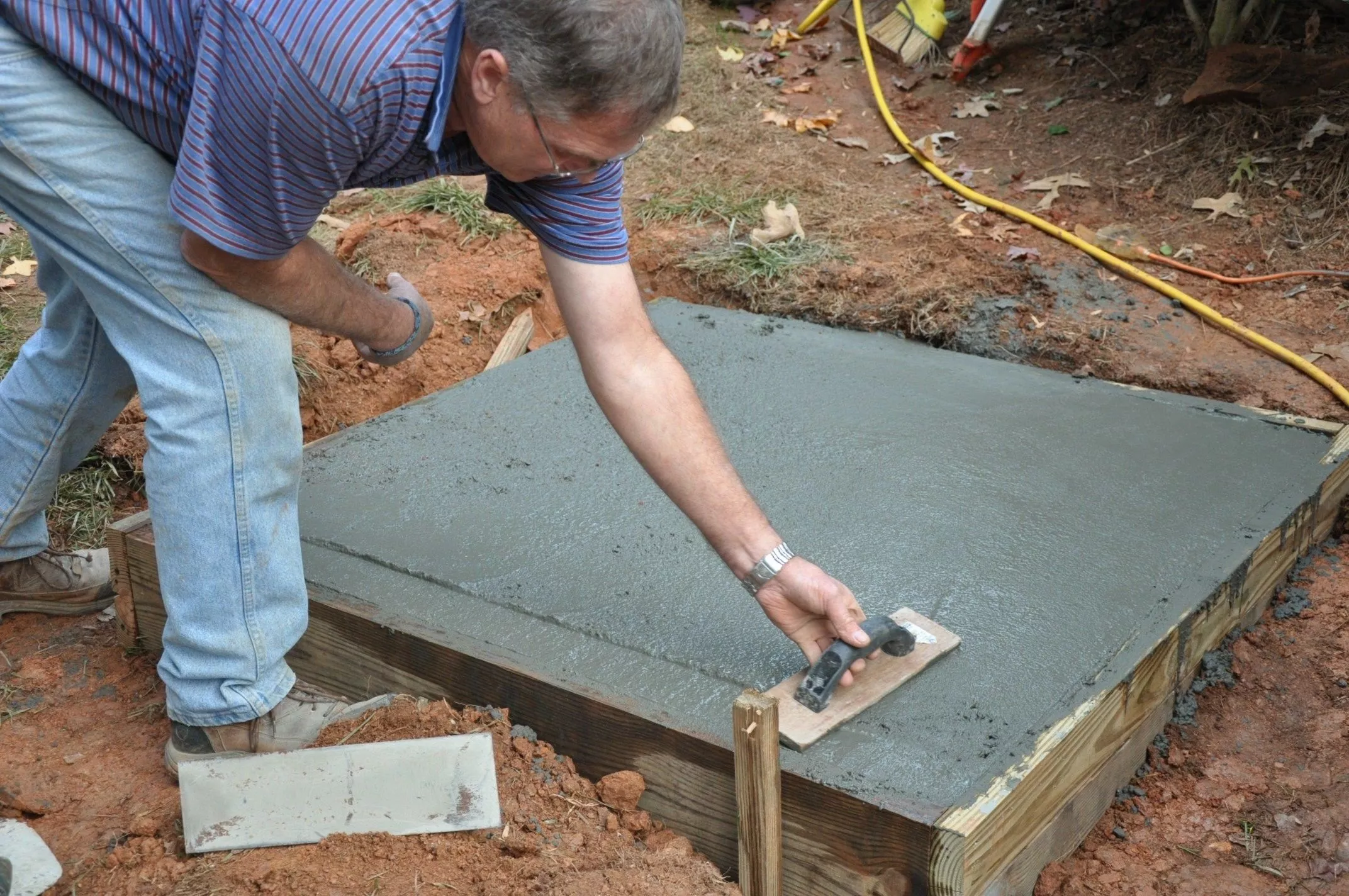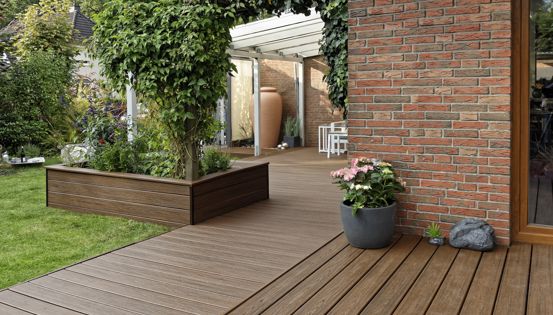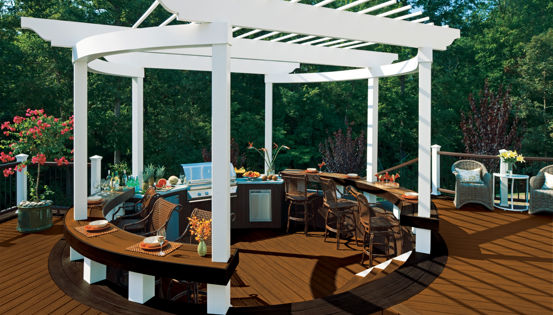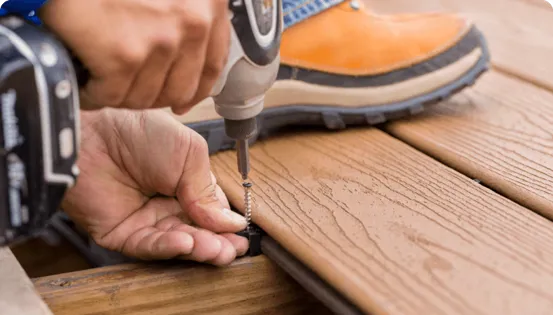Concrete is, in fact, the most used material for construction in the world and has been in use since the age of the Roman Empire. Concrete is a mixture of aggregate (sand and gravel) combined with water and cement. Depending on the ratio of these parts, the concrete can be stronger or weaker. Concrete hardens in a process known as hydration, which is caused by the reaction between water and cement. Adding too much water can weaken the concrete.
For most deck projects, it is practical to buy bags of premixed concrete that are prepared by adding water and mixing. You can use a wheelbarrow and mix with a hoe to a consistency that is able to move and fill voids, but is not too wet and soupy. Hoes work better for mixing concrete than shovels. Renting a mixer can reduce your labor time by half. Be sure to follow the instructions listed on the packaging. It is possible to make your own concrete mix by combining 3 parts gravel, 2 parts sand and 1 part cement, but this requires more knowledge and skill than using premixed bags. Your footing should be at least as thick as it is wide at its base. The ideal temperature for pouring concrete is between 50-90 degrees F.
Make sure you use 5,000 psi concrete mix. Once you have poured half of the concrete into the tube, you should consolidate it with a shovel or a piece of rebar to eliminate air pocket voids. Pour concrete until it is overflowing the form tube and level off the top with a shovel.







